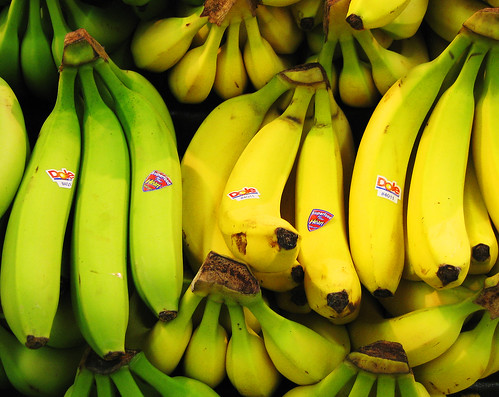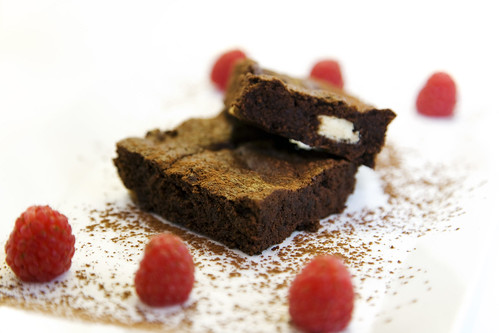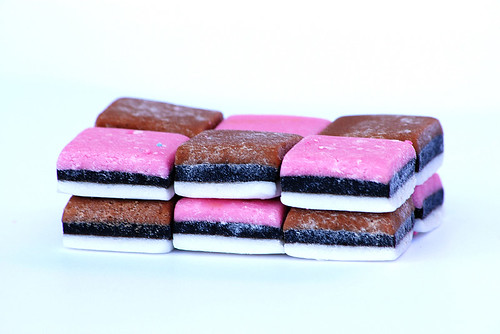Last week I wrote about the effectiveness of probiotics for improving gut health and immunity. While not all studies agreed they could ward off the flu, pretty much all of them found at least some positive effects on the immune system from taking probiotics.
As mentioned, probiotics are available as supplements and in some foods such as dairy products. But there's also another way of promoting healthy bacteria in the gastrointestinal tract: prebiotics. Prebiotics are non-digestible ingredients in food that stimulate the growth and activity of healthy bacteria inside the body. In a sense, prebiotics cause the body to produce its own probiotics.
What are prebiotics?
There is some disagreement in the scientific community over which substances are probiotics, but at the minimum this category includes oligofructose and inulin. Oligofructose is a fructooligosaccharide, which refers to a short chain of sugar (in this case fructose) molecules. Inulins are a group of polysaccharides, which means a long chain of sugar molecules.
Since these prebiotics are composed of sugars, they are carbohydrates, and since they are indigestable, they are fibers. Further, inulin and oligofructose are soluble fibers, meaning that they're able to dissolve in water. Though they can't be digested, they do undergo fermentation as the bacteria get their hands on them. At the same time, the microflora of the gut is affected.
As the bacteria metabolise prebiotics in the colon, significant quantities of carbon dioxide, hydrogen and methane are released, which means that eating foods with prebiotics can cause gas. With long-term consumption, as the body grows accustomed to inulin and oligofructose, this unpleasant side effect is reduced.
Food sources of prebiotics
Inulin and oligofructose are naturally present in many plant foods, but their quantities differ significantly. Here's a list of foods in decreasing order of their average prebiotic content (values per 100 g [link]):
- Chicory root: 41.6 g inulin, 22.9 g oligofructose
- Jerusalem artichoke: 18.0 g inulin, 13.5 g oligofructose
- Dandelion greens: 13.5 g inulin, 10.8 g oligofructose
- Garlic: 12.5 g inulin, 5.0 g oligofructose
- Leek: 6.5 g inulin, 5.2 g oligofructose
- Asparagus: 2.5 g inulin, 2.5 g oligofructose
- Wheat bran: 2.5 g inulin, 2.5 g oligofructose
- Wheat flour, baked: 2.4 g inulin, 2.4 g oligofructose
- Banana: 0.5 g inulin, 0.5 oligofructose
Note that unless stated otherwise, these figures apply to raw foods. Cooking in general seems to reduce content of prebiotics by 25-75%. Chicory root and Jerusalem artichoke (not to be confused with the globe artichoke, which is green in color) clearly take the cake. Even when cooked, these two plants still contain plenty of inulin and oligofructose.
Prebiotics and the immune system
Since probiotics have been shown to benefit the immune system, and prebiotics promote probiotic bacteria in the gastrointestinal tract, it makes sense that the consumption of prebiotics would have similar effects. Unfortunately, for those interested in preventing the common cold and other viral infections, not many studies have actually looked at whether prebiotics are effective. With that in mind, let's take a look at the evidence behind prebiotics and their effect on immune health in general.
There are some studies on humans showing that the consumption of prebiotics does modify the immune system (link, link). Specifically, prebiotics may reduce intestinal infections and intenstinal inflammation. On the other hand, inulin and oligofructose can also activate immune cells and increase the cytotoxicity of natural killer cells and the production of cytokines (link). In rats, prebiotics increase the number of T cells, interleukin-2 and interleukin-4, which indicates that prebiotics enhance the immune system (link).
One study found that a prebiotic galacto-oligosaccharide mixture was helpful in reducing travellers' diarrhoea (link). Those who got the prebiotic instead of the placebo had fewer incidences and less symptoms of diarrhoea when travelling to foreign countires. In infants, human milk protects from morbidity and mortality due to diarrhoea compared to formula milk, most likely because of the presence of prebiotic oligosaccharides in human milk (link). Some studies have also shown that prebiotics may help with irritable bowel syndrome (link), but the evidence is inconclusive. And, even though prebiotics may cause gas, they can also help with lactose intolerance (link).
A commonly cited example of the health effects of probiotic-containing foods is their anticarcinogenic activity. This is at least in part due to the stimulation of lactic acid producing bacteria in the colon, since lactic acid producing bacteria reduce the ability of microflora to produce carcinogens. Prebiotics seem to have a similar effect (link), possibly being even more effective than probiotics (link).
As for influenza, one study found that gamma-inulin, the active component of inulin preparations, improved the response to a variety of antigens in mice (link). When given a lethal dose of the influenza virus, all of the mice died, but when gamma-inulin was administered at the same time, half of them survived.
Synbiotics: even better than prebiotics and probiotics?
Synbiotics is the fancy name given to combinations of probiotics and prebiotics. The idea is that these two would work synergistically to produce even better results than either one would alone. Indeed, there is some evidence that synbiotics are superior to prebiotics and probiotics (link). In any case, the effect of synbiotics is different from that of pre- or probiotics (link).
Not all the studies are quite as promising, however One study found that rats fed prebiotics actually had a poorer resistance to salmonella than controls (link). This impairment was partially but not entirely prevented by calcium phosphate. It's not clear whether the same applies to humans, but it does emphasize the fact that we don't entirely understand how synbiotics affect the immune system.
Conclusion
While almost all studies have shown at least some benefit from probiotics, less is known about the effect of probiotics and synbiotics on the immune system. Prebiotics appear to increase the number and activity of probiotic bacteria in the body, but studies in humans and animals have yielded inconclusive results.
Sources of prebiotics, namely inulin and fructooligosaccharide, include nutritional supplements and plant foods. Compared to most commonly consumed foods with prebiotics, such as wheat and banana, supplements are often a better source. However, Jerusalem artichoke and chicory root are the best sources of inulin and fructooligosaccharide, containing much more than any supplement.
For more information on immunity and supplements, see these posts:
Enhancing Immunity with Probiotics: Can They Ward Off the Flu?
Swine Flu and Avoiding the Cytokine Storm: What to Eat and What Not to Eat?
Examining Possible Causes for Slower Wound Healing
How to Choose Between Different Forms of Coenzyme Q10: Ubiquinone vs. Ubiquinol















